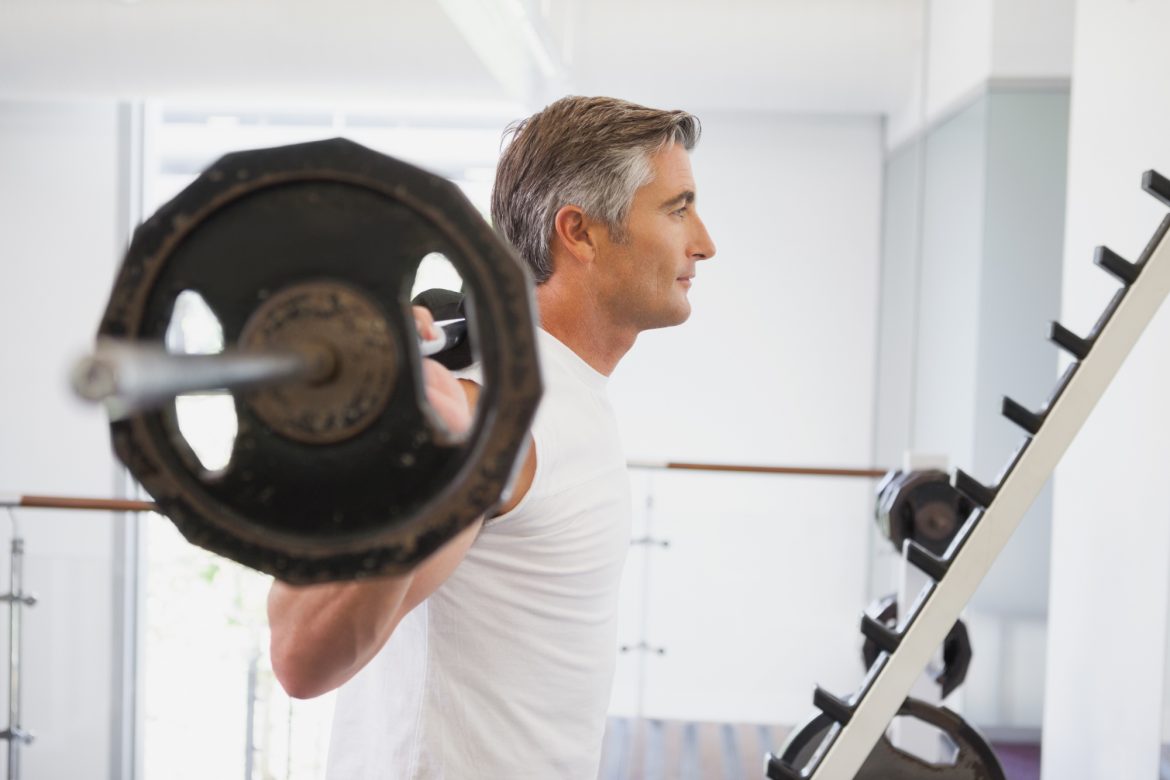Over the past few years, Phil’s sex drive had begun to wane, and he felt himself gradually losing his vitality. More recently, he developed a new habit of falling asleep immediately after dinner. And while he knew hitting the gym was supposed to help him combat fatigue, elevate his mood, and keep his body strong, his workouts didn’t give him the results they used to.
If this sounds familiar, you may have chalked it up to aging. But for many men, the symptoms we associate with advancing age may actually arise from low testosterone.
Low testosterone (low T) is not an inevitable condition. While testosterone levels typically begin falling very gradually when men reach the age of 30, levels sometimes drop more precipitously, creating an imbalance. This is when uncomfortable symptoms may occur. Early signs can include decreased sex drive, low energy levels, depression, and lack of concentration. Over time, men may notice the growth of breast tissue and loss of hair from the face and body. If low levels persist, there may also be a loss of muscle mass and bone mineral density.
Unfortunately, many men are reluctant to seek medical treatment even when the symptoms of low testosterone become burdensome, and it can be tempting to try DIY strategies to avoid seeing a healthcare practitioner. Often, this begins with exercise. But can exercise help low testosterone?
Can Exercise Help Low Testosterone?
The answer is: it’s complicated.
Exercise is a crucial part of a healthy lifestyle. It builds muscles, helps maintain a healthy weight, strengthens the cardiovascular system, and is also proven to improve mood. Weight-bearing exercise and resistance training can support bone strength and help us maintain skeletal integrity. Exercise also impacts our endocrine system, and in men, this can affect testosterone levels.
There is a growing body of evidence that exercise can boost testosterone. Some of the most compelling findings include:
- Moderate to high-intensity exercise can have a positive effect on free and total testosterone levels. A recent meta-analysis found elevated testosterone levels in serum and saliva immediately after and within 30 minutes of exercise completion.
- Overweight men often experience a decrease in serum testosterone levels due to its conversion to estrogen by excess body fat. A 2018 study demonstrated that a 12-week aerobic exercise program increased total serum testosterone, free testosterone, and bioavailable testosterone levels in overweight/obese men.
So while many studies show there can be a connection between exercise and testosterone levels, the rise is often quick and transient. For some men, a spike is expected at 30 minutes post-exercise, but within a few hours, it will return to pre-exercise levels. According to those studies, the only significant exception is when exercise contributes to weight loss in overweight men. And even for those men, more exercise is not necessarily the best way to correct low testosterone.
The Potentially Negative Effects of Too Much Exercise
While exercise can have a positive influence on testosterone levels, too much of a good thing can have the opposite effect. High levels of endurance exercise (distance running, cycling, triathlon training, etc.) or the training associated with professional sports (football, wrestling, etc.) may cause a syndrome called exercise hypogonadal male condition. Seen in as many as 25% of men who engage in endurance exercise over long periods of time, this condition results in persistently lower testosterone levels, leading researchers to conclude that intense exercise can sometimes resets the body’s testosterone baseline.
Finding Help for Low Testosterone
Testosterone levels vary throughout a man’s lifetime, and the normal range is wide. But when your testosterone levels fall low enough to produce symptoms, it’s important to get help. Today, telehealth visits, in-home sample collection, and home delivery of medications have made it easier than ever to begin and maintain treatment.
Hormone specialists in the BodyLogicMD network begin the fight against low testosterone with a clinical consultation and comprehensive diagnostic testing. By determining free and total testosterone, as well as the levels of albumin and binding proteins, an experienced practitioner can try and develop a clear picture of your hormonal health. If you are found to have low testosterone, the most common treatment practitioners proceed with is testosterone replacement therapy (TRT). With both traditional and bioidentical hormone replacement therapy options and a variety of administration routes to choose from, you can work with your practitioner to form a treatment method that works for you.
If your symptoms suggest a hormone imbalance, it’s time to check it out.. Not only can replenishing testosterone help you elevate mood and restore your energy levels, it may also allow you to reap greater benefits from exercise and make your workouts more effective.
If you are experiencing symptoms of low testosterone, BodyLogicMD wants to help. From telehealth appointments and comprehensive in-home testing to custom-compounded TRT, the practitioners in the BodyLogicMD network want to give you the support you need to regain balance. Set up your telehealth consultation, or take the BodyLogicMD Hormone Balance Quiz to learn more about how hormones may be affecting your everyday life.
Disclaimer: These statements have not been evaluated by the Food and Drug Administration. All content on this website is for informational purposes only. The content is not intended to diagnose, treat, cure or prevent diseases.
